Non-intrusive high throughput automated data collection from the home cage
- PMID: 30997429
- PMCID: PMC6451168
- DOI: 10.1016/j.heliyon.2019.e01454
Non-intrusive high throughput automated data collection from the home cage
Abstract
Automated home cage monitoring represents a key technology to collect animal activity information directly from the home cage. The availability of 24/7 cage data enables extensive and quantitative assessment of mouse behavior and activity over long periods of time than possible otherwise. When home cage monitoring is performed directly at the home cage rack, it is possible to leverage additional advantages, including, e.g., partial (or total) reduction of animal handling, no need for setting up external data collection system as well as not requiring dedicated labs and personnel to perform tests. In this work we introduce a home cage-home rack monitoring system that is capable of continuously detecting spontaneous animal activity occurring in the home cage directly from the home cage rack. The proposed system is based on an electrical capacitance sensing technology that enables non-intrusive and continuous home cage monitoring. We then present a few animal activity metrics that are validated via comparison against a video camera-based tracking system. The results show that the proposed home-cage monitoring system can provide animal activity metrics that are comparable to the ones derived via a conventional video tracking system, with the advantage of system scalability, limited amount of both data generated and computational capabilities required to derive metrics.
Keywords: Bioengineering; Bioinformatics; Cancer research; Genetics; Neuroscience; Physiology; Toxicology.
Figures


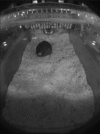
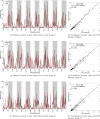
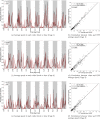
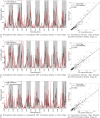
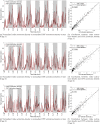
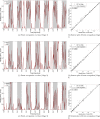
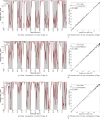
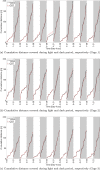
Similar articles
-
MouseVUER: video based open-source system for laboratory mouse home-cage monitoring.Sci Rep. 2024 Feb 1;14(1):2662. doi: 10.1038/s41598-024-52788-9. Sci Rep. 2024. PMID: 38302573 Free PMC article.
-
Automated recording of home cage activity and temperature of individual rats housed in social groups: The Rodent Big Brother project.PLoS One. 2017 Sep 6;12(9):e0181068. doi: 10.1371/journal.pone.0181068. eCollection 2017. PLoS One. 2017. PMID: 28877172 Free PMC article.
-
Measuring Behavior in the Home Cage: Study Design, Applications, Challenges, and Perspectives.Front Behav Neurosci. 2021 Sep 24;15:735387. doi: 10.3389/fnbeh.2021.735387. eCollection 2021. Front Behav Neurosci. 2021. PMID: 34630052 Free PMC article.
-
Measuring Locomotor Activity and Behavioral Aspects of Rodents Living in the Home-Cage.Front Behav Neurosci. 2022 Apr 7;16:877323. doi: 10.3389/fnbeh.2022.877323. eCollection 2022. Front Behav Neurosci. 2022. PMID: 35464142 Free PMC article. Review.
-
The Promise of Automated Home-Cage Monitoring in Improving Translational Utility of Psychiatric Research in Rodents.Front Neurosci. 2020 Dec 17;14:618593. doi: 10.3389/fnins.2020.618593. eCollection 2020. Front Neurosci. 2020. PMID: 33390898 Free PMC article. Review.
Cited by
-
Activity in Group-Housed Home Cages of Mice as a Novel Preclinical Biomarker in Oncology Studies.Cancers (Basel). 2023 Sep 29;15(19):4798. doi: 10.3390/cancers15194798. Cancers (Basel). 2023. PMID: 37835492 Free PMC article.
-
Effects of Cage Position and Light Transmission on Home Cage Activity and Circadian Entrainment in Mice.Front Neurosci. 2022 Jan 10;15:832535. doi: 10.3389/fnins.2021.832535. eCollection 2021. Front Neurosci. 2022. PMID: 35082600 Free PMC article.
-
The Impact of Voluntary Exercise on Stroke Recovery.Front Neurosci. 2021 Jul 12;15:695138. doi: 10.3389/fnins.2021.695138. eCollection 2021. Front Neurosci. 2021. PMID: 34321996 Free PMC article.
-
Abnormal cytoskeletal remodeling but normal neuronal excitability in a mouse model of the recurrent developmental and epileptic encephalopathy-susceptibility KCNB1-p.R312H variant.Commun Biol. 2024 Dec 30;7(1):1713. doi: 10.1038/s42003-024-07344-6. Commun Biol. 2024. PMID: 39738805 Free PMC article.
-
A multicentre study on spontaneous in-cage activity and micro-environmental conditions of IVC housed C57BL/6J mice during consecutive cycles of bi-weekly cage-change.PLoS One. 2022 May 25;17(5):e0267281. doi: 10.1371/journal.pone.0267281. eCollection 2022. PLoS One. 2022. PMID: 35613182 Free PMC article.
References
-
- Baumans V. Science-based assessment of animal welfare: laboratory animals. Rev. Sci. Tech. - Int. Off. Epizoot. August 2005;24(2):503–513. http://europepmc.org/abstract/MED/16358504 - PubMed
-
- Kramer K. Evaluation and applications of radiotelemetry in small laboratory animals. Physiol. Genomics. 2003;13:197–205. - PubMed
-
- Richardson C.A. The power of automated behavioural homecage technologies in characterizing disease progression in laboratory mice: a review. Appl. Anim. Behav. Sci. 2015;163:19–27.
-
- Balzani E., Falappa M., Balci F., Tucci V. An approach to monitoring home-cage behavior in mice that facilitates data sharing. Nat. Protoc. May 2018;13:1331. - PubMed
LinkOut - more resources
Full Text Sources
Molecular Biology Databases

